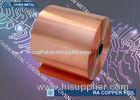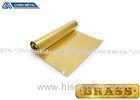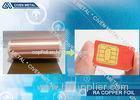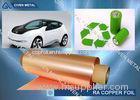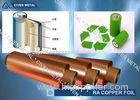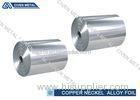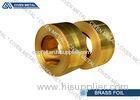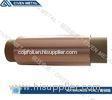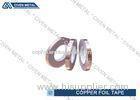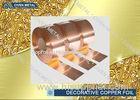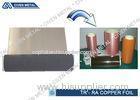Two Layers Copper Invar Copper C11000 Cu & FeNi36 Cladded Metal Foil
| Place of Origin: | Guangdong, China (Mainland) |
|
|
|
| Add to My Favorites | |
| HiSupplier Escrow |
Product Detail
CIC ( Copper - Invar™ - Copper ) C11000 Cu & FeNi36 Cladded Metal Foil
CIC ( Copper - Invar™ - Copper ) C11000 Cu & FeNi36 Cladded Metal Foil
Description :
Copper Invar Copper was introduced into the printed circuit board industry to combat the differing coefficient of thermal expansion encountered when bonding very dissimilar materials together.
In high temperature environments Copper Invar Copper is sometimes use to strengthen the printed circuit board and control expansion.
Copper Invar Copper is a layer of invar which is a nickel containing iron alloy sandwiched in between two layers of copper.Copper Invar Copper is readily available in two thicknesses.
CIC foil is used for printed circuit boards with ground and power planes and metal cores. The low CTE(coefficient of thermal expansion)over a broad temperature range (-55-125) is crucial for aerospace and some special fields.
Invar is a nickel iron alloy with ca. 1/3 nickel and 2/3 iron. Its coefficient of thermal expansion CTE is about 1.5 ppm/K. Implementation of CIC layers (copper-invar-copper-composite metal) into multilayer PCBs is used to contol in plane expansion (CTExy).
Thermal stress at higher thermal cycles leads to fatigue and fraction of solder joints.
Ceramic semiconductor components like leadless ceramic chip-carrier (LCCC) are used for high reliable electronics. Differences of CTE of the components of ca. 6-8 ppm/K im Bauteil versus ca. 16 ppm/K of the PCB substrate lead to damages at the solder joint if no CIC is applied.
The bigger the BGA the more carefully has to be planned the stack-up.
Normally two symmetrically Cu-Invar-Cu Layers of 0.15 mm thickness each are arranged directly beneath the external layers. Cu-lnvar-Cu layer can be connected electrically, but it is not recommended to use it as power planes due to its impact on drills. On the other hand, CIC can be used for heat spreading like power planes. Heat is spreaded by the copper share ot CIC. Invar does not play a significant roll in this view, because the thermal conductivity is only 3% compared to copper.
Structure:
|
Material |
Thickness (%) |
|
Cu | FeNi36 | Cu |
12.5% | 75% | 12.5% |
Features :
Density: 8.33g/cm³
Thermal conductivity: 1.10(xy plane)0.19(z plane)W cm/cm²
Electrical conductivity: 14.5 m/ mm² (20,soft annealed)
Electrical Resistivity: 0.069 m/ mm² (20,soft annealed)
Modulus of Elasticity: 140000 N/mm²
CTE(Coefficient of thermal expansion): 2.4 to 5.6 ppm/ annealed condition longitudinal
Specification:
|
Item |
Unit |
Size |
|||
|
Thickness |
mm |
0.035 |
0.05 |
0.075 |
>0.1 |
|
Width |
mm |
1-600 |
1-600 |
1-600 |
1-600 |
|
Thickness tolerance |
|
±10% |
±10% |
±10% |
±10% |
|
Width tolerance |
mm |
±1.0 |
±1.0 |
±1.0 |
±1.0 |
Why Choose Civen As Your Supplier :
- We are the most experienced copper manufacturer in China since 1998 ;We have many
- Many important customer in China and oversea markets like: Samsung(Korea), LG(Korea), Matsushita(China), BYD, and so on.
- We awarded a lot of certificates in this field such as CTI, SGS, ISO 9001, and etc.
- We have inventory for many regular size in Shanghai , and we can send goods out as soon as possible.

Craft:

Package :

Related Search
Find more related products in following catalogs on Hisupplier.com

Company Info
Civen Metal Material Co.,Ltd [China (Mainland)]
Business Type:Manufacturer
City: Shanghai
Province/State: Shanghai
Country/Region: China (Mainland)











